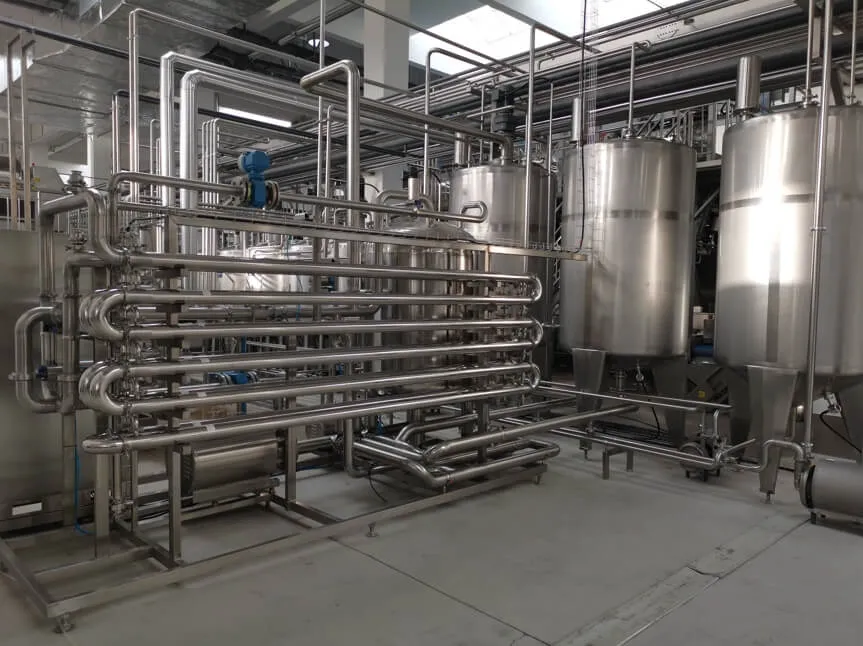Apple juice concentrate is a vital ingredient widely used in the food and beverage industry. From juice drinks to bakery fillings, this concentrated form of apple juice offers extended shelf life, reduced transportation costs, and versatile applications across industries.
This article explores what apple juice concentrate is, how it’s made, its uses, and the equipment required to produce it efficiently.
What Is Apple Juice Concentrate?
Apple juice concentrate is produced by removing a large portion of water from fresh apple juice, typically through vacuum evaporation. The result is a thick, sweet liquid that retains the flavor and nutritional essence of the original juice but in a more compact form.
It is usually labeled with Brix values (e.g., 70° Brix), which indicate the sugar content and concentration level.
Benefits of Apple Juice Concentrate
✅ Cost-Effective Shipping: Reduced water content lowers volume and weight, cutting transport costs.
✅ Long Shelf Life: Can be stored and transported without refrigeration when sealed.
✅ Versatility: Used in juices, sauces, jams, baked goods, and baby food.
✅ Consistent Flavor: Maintains apple taste without seasonal variation.
✅ Easy Reconstitution: Simply mix with water to turn it back into juice.
Apple Juice Concentrate Production Process
A typical apple juice concentrate processing line includes the following key steps:
1. Raw Apple Cleaning and Sorting
- Apples are washed and sorted to remove dirt, leaves, and damaged fruit.
2. Crushing and Pulping
- Apples are crushed into mash to prepare for juice extraction.
3. Juice Extraction
- Using belt presses or hydraulic presses to separate juice from solids.
4. Juice Clarification
- Centrifugal separators or ultrafiltration systems remove suspended solids and impurities.
5. Evaporation (Concentration)
- A vacuum evaporator removes up to 70% of the water content from the juice.
- This is the most critical step, preserving flavor while concentrating sugars and nutrients.
6. Pasteurization
- Heat treatment ensures microbial safety before storage or packaging.
7. Aseptic Filling or Storage
- The concentrate is packed in sterile containers like drums, bags-in-box, or IBC totes.
Common Applications of Apple Juice Concentrate
- 🍏 Fruit juice and soft drinks
- 🧁 Bakery fillings and pastries
- 🍼 Baby food formulations
- 🍬 Candies, jellies, and syrups
- 🥫 Sauces and marinades
- 🧃 Reconstituted fruit juices
Equipment Required for Apple Juice Concentrate Production
To build an efficient apple juice concentrate production line, you’ll need:
- Apple washing and sorting machine
- Crusher/pulper
- Juice extractor (belt or screw press)
- Clarifier or centrifuge
- Vacuum evaporator (single-effect or multi-effect)
- Pasteurizer
- Aseptic filling machine
- CIP (Clean-In-Place) system for hygiene
Tip: For large-scale production, automated PLC control systems and stainless steel construction are essential to meet food-grade standards and optimize performance.
Things to Consider When Investing in Apple Juice Concentrate Equipment
- 🔧 Processing Capacity: How many tons of apples per day?
- 🌡️ Evaporation Efficiency: Multi-effect evaporators offer energy savings.
- 🧪 Product Quality Control: Brix and acidity monitoring systems improve consistency.
- 🧼 Sanitation: CIP systems help maintain hygienic processing conditions.
- 🔁 Integration: Ensure seamless flow from raw material input to final concentrate output.
